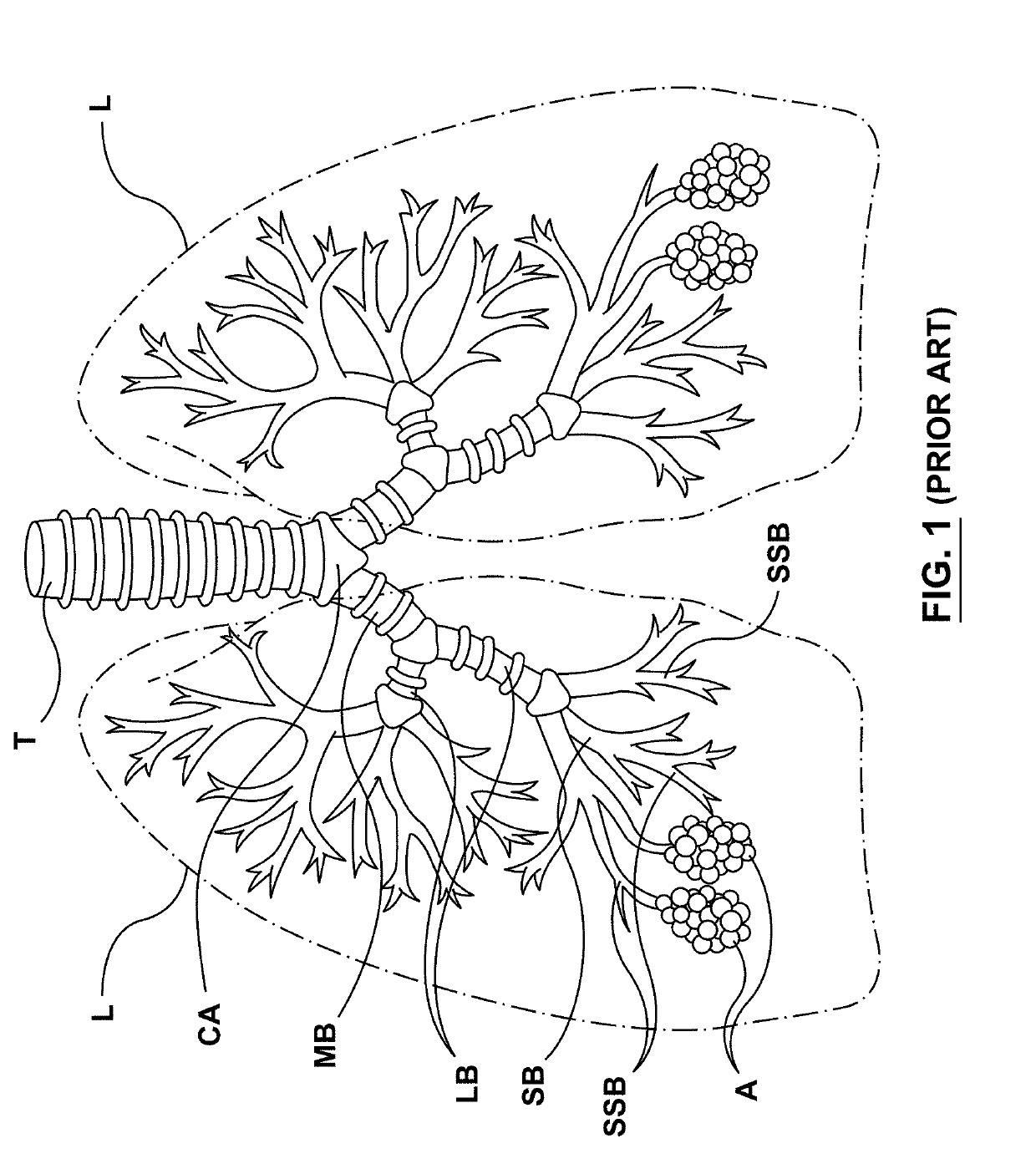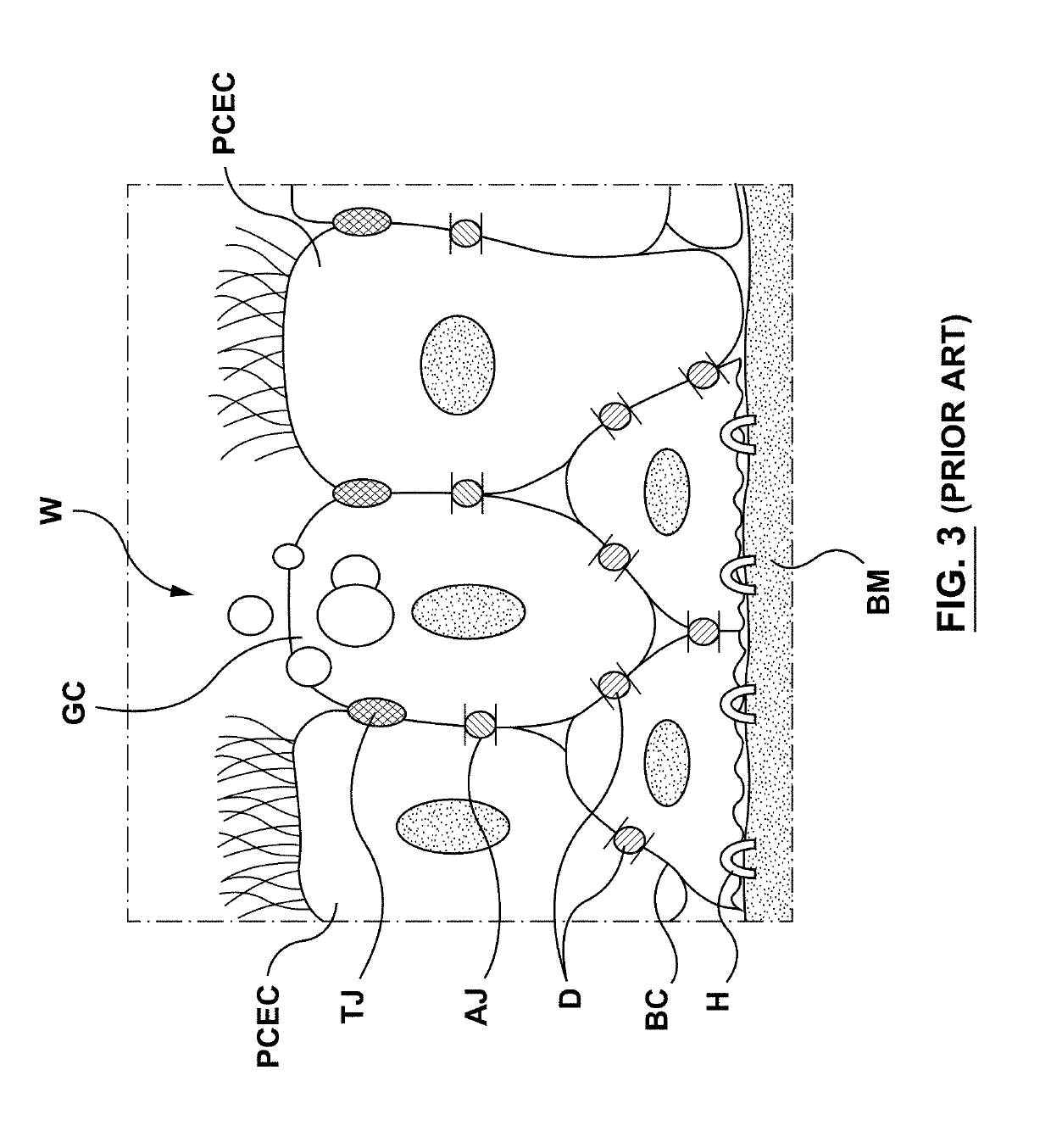Methods, apparatuses, and systems for the treatment of pulmonary disorders
- Summary
- Abstract
- Description
- Claims
- Application Information
AI Technical Summary
Benefits of technology
Problems solved by technology
Method used
Image
Examples
example 1
ential Treatment and Tissue Effect With a Bipolar System
[0426]A non-thermal energy delivery apparatus having bipolar expandable energy delivery bodies was developed. The apparatus included two energy delivery bodies, each comprised of nitinol, braided, expanding electrodes mounted concentrically on a catheter shaft with a mechanism to expanded and contract both energy delivery bodies (e.g., see FIG. 27). The expanded energy delivery body diameters ranged from about 5 mm to about 20 mm. There energy delivery bodies were substantially equal in length at about 3 cm each, and were spaced along the longitudinal axis of the catheter shaft about 2.5 cm apart from edge to edge. To evaluate the effect of pulsed high-voltage energy on epithelial and submucosal tissue layers within the airway, the apparatus was introduced into the left and / or right bronchi of live, anesthetized pigs and energy was delivered in the form of bipolar, square-wave pulses at a pulse frequency of about 300 kHz, pulse...
example 2
ential Treatment and Tissue Effect With a Monopolar System
[0429]A non-thermal energy delivery apparatus having a monopolar expandable energy delivery body was developed. The apparatus included a single energy delivery body comprised of nitinol, braided, expanding electrode mounted concentrically on a catheter shaft with a mechanism to expanded and contract the energy delivery body (e.g., see FIG. 26). The expanded energy delivery diameter ranged from about 5 mm to about 20 mm. To evaluate the effect of pulsed high-voltage energy on epithelial and submucosal tissue layers within the airway, the apparatus was introduced into the left and / or right bronchi of live, anesthetized pigs and energy was delivered in the form of bipolar, square-wave pulses at a pulse frequency of 300 kHz, pulse amplitude of 4000 V and total energy delivery duration of 415 microseconds (83 microseconds per packet, 5 packets).
[0430]Following the procedure, the animals were recovered, then subsequently euthanized...
PUM
 Login to View More
Login to View More Abstract
Description
Claims
Application Information
 Login to View More
Login to View More - R&D
- Intellectual Property
- Life Sciences
- Materials
- Tech Scout
- Unparalleled Data Quality
- Higher Quality Content
- 60% Fewer Hallucinations
Browse by: Latest US Patents, China's latest patents, Technical Efficacy Thesaurus, Application Domain, Technology Topic, Popular Technical Reports.
© 2025 PatSnap. All rights reserved.Legal|Privacy policy|Modern Slavery Act Transparency Statement|Sitemap|About US| Contact US: help@patsnap.com



